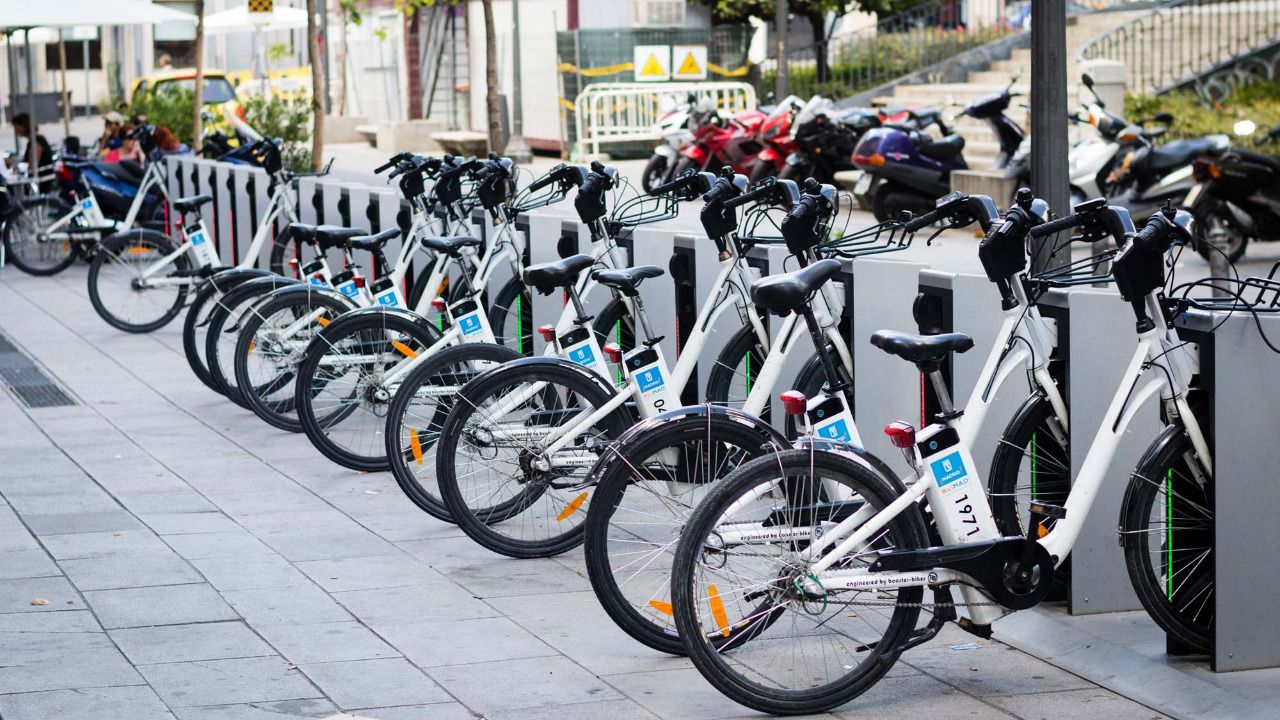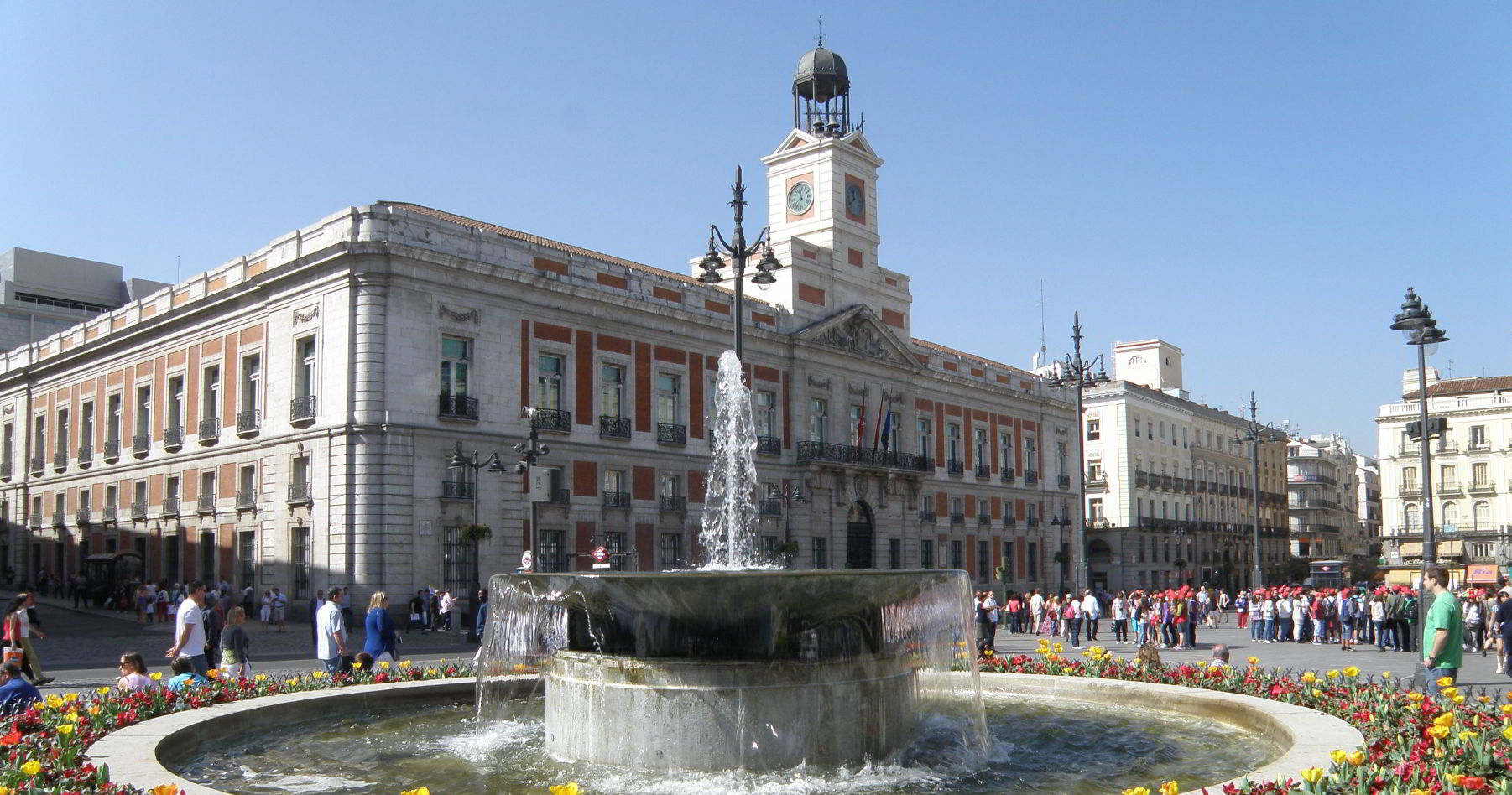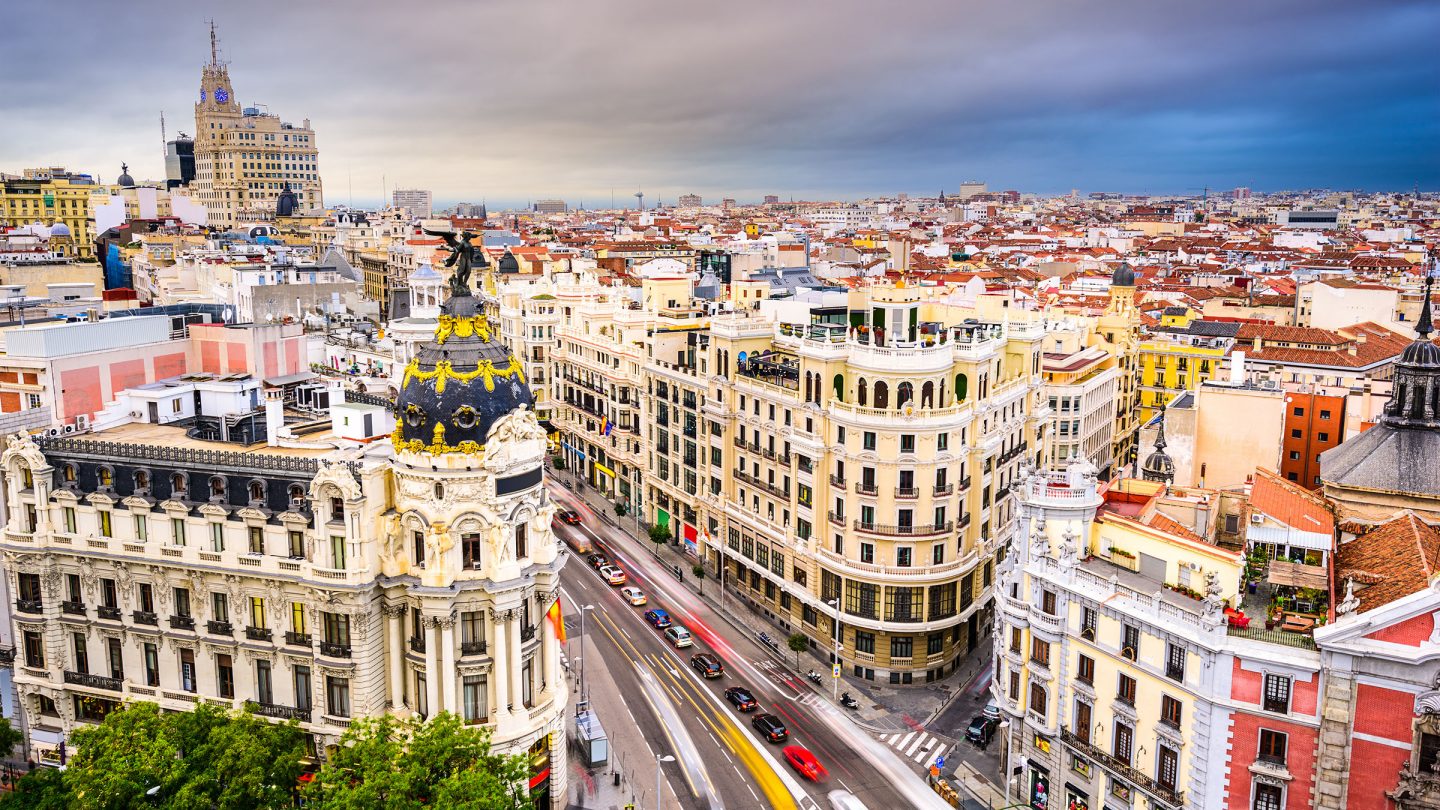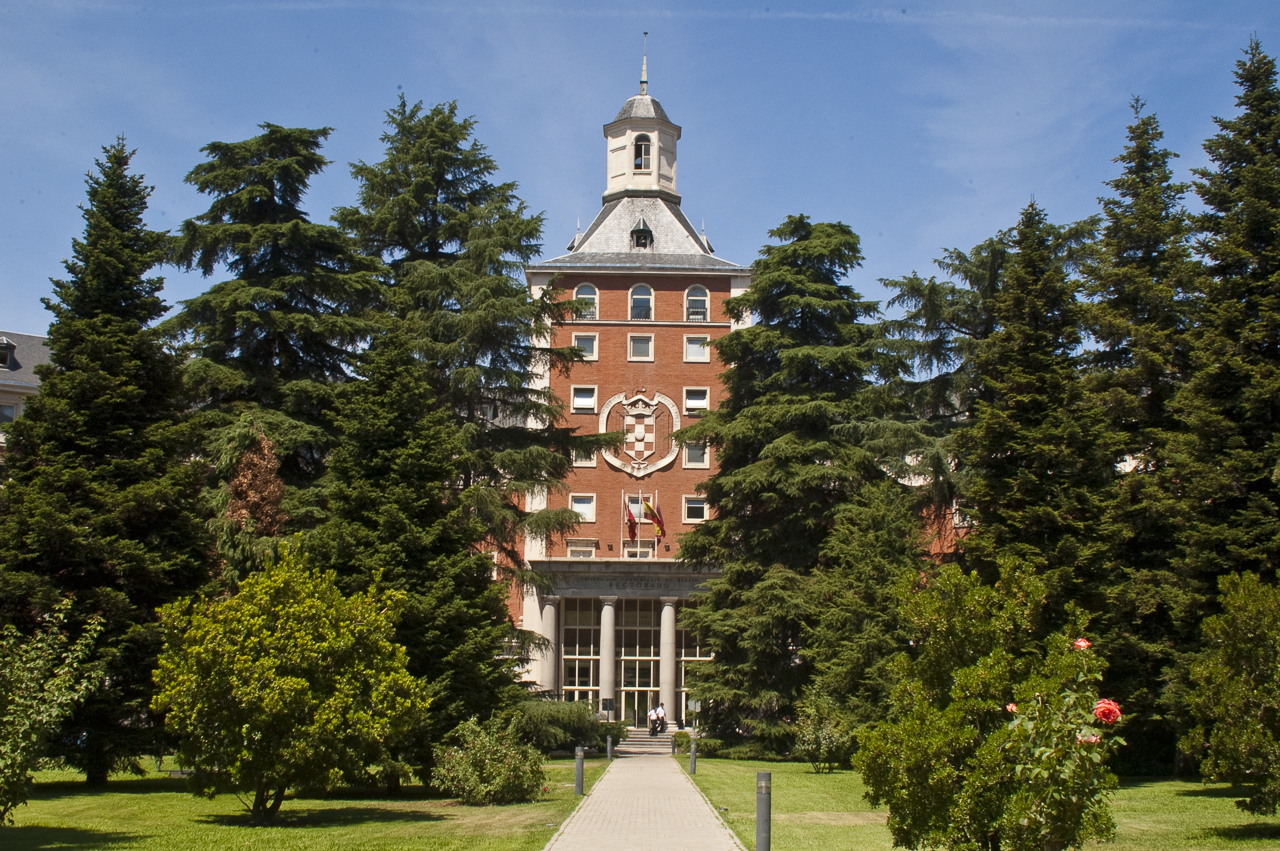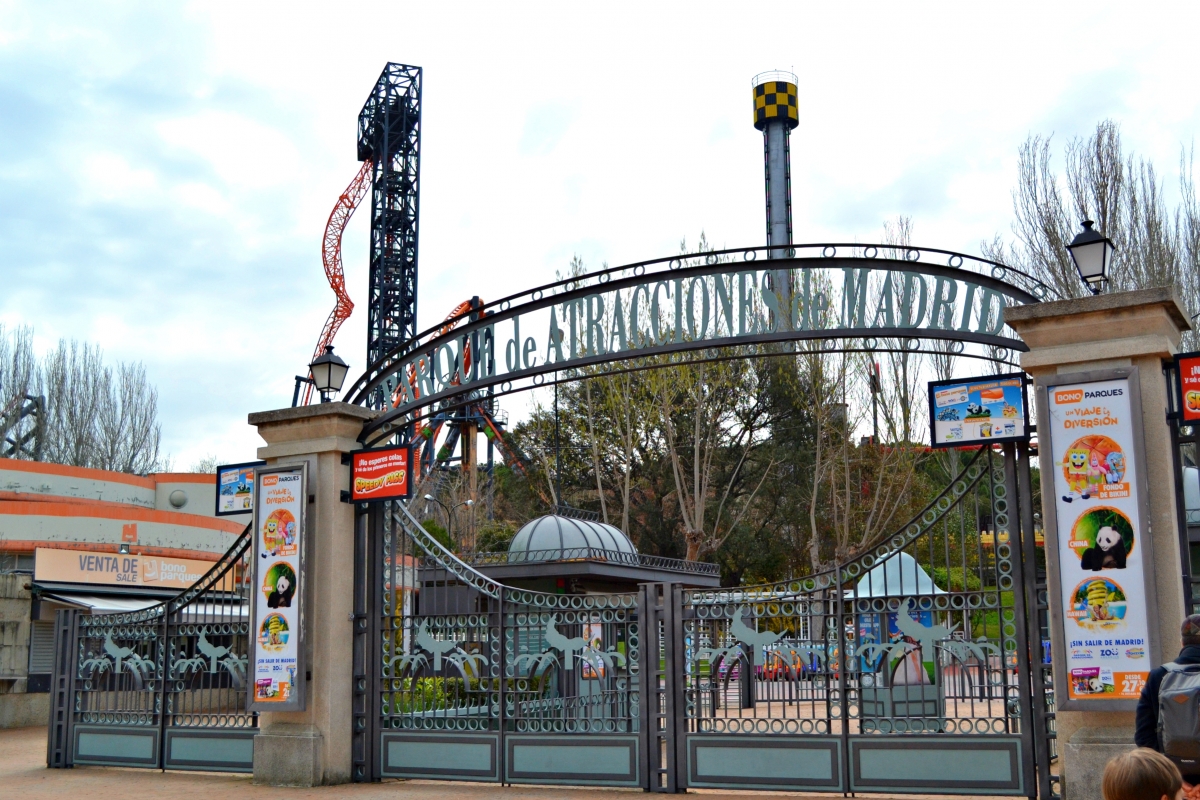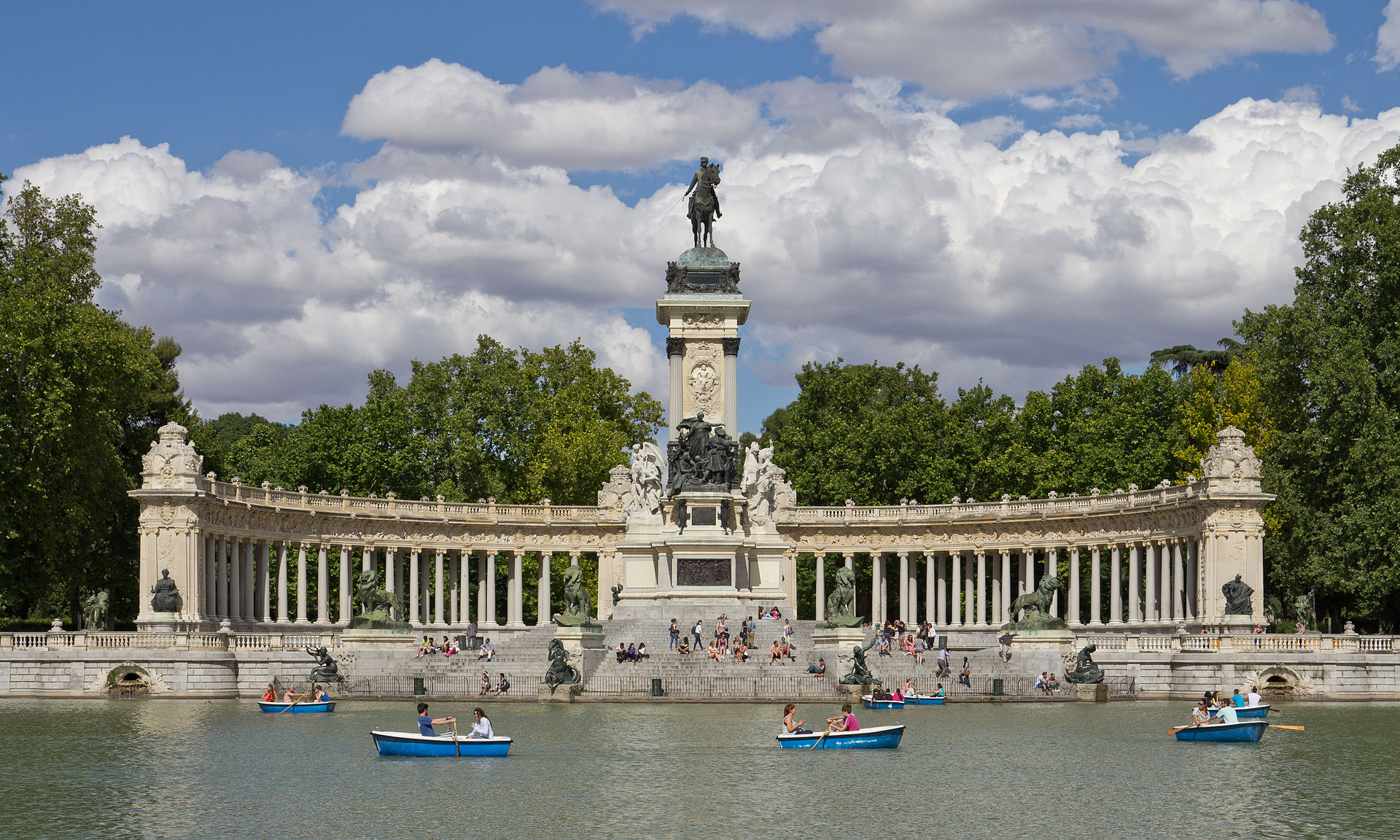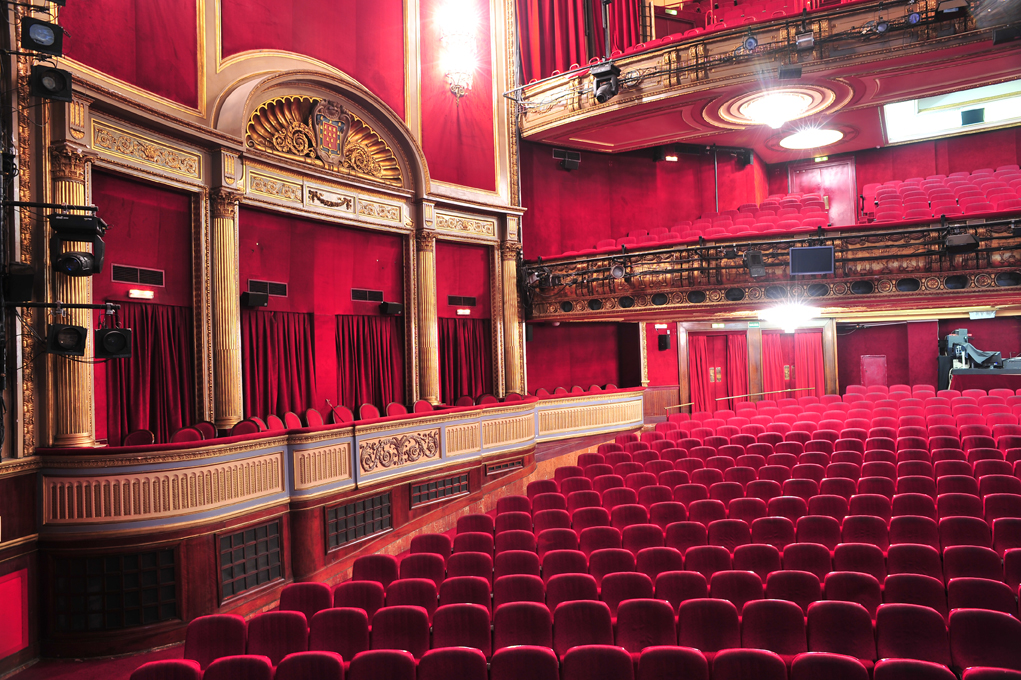If there is something that makes Madrid unique, it is that everything is nearby and just a train or bus ride away. You stay as a student is sure to be unforgettable and you won’t want to miss out on all the places Madrid has to offer you.
There are places to visit in one day. So, take advantage of you weekends, put on your most comfortable clothes, and get ready for the best surprises.
Toledo
Surely one of the first things that comes to mind when you arrive in Europe is the medieval, old-world cities and cultures. That is why one of the first places you should know about is Toledo, an ancient city located in the plain of Castilla-La Mancha and the third most populated municipality in the region.
Toledo is best known for having been a place where Jewish, Christian and Muslim cultures coexisted. That is why when walking through its small streets you will find old synagogues, churches, and mosques.

You can also visit places such as the Catedral Primada de Toledo, a Catholic temple considered the greatest work of Gothic architecture in Spain. The entrance to this place costs 12.50 euros, although you can take a free tour from Monday to Friday, from 8am-9:30am in the morning.
Another place we reccomend is the Alcazar, a fortification located in the highest part of the city. An interesting fact is that it was a Roman palace in the 3rd century, but it also played a leading role during the Spanish Civil War.
To add, you can’t miss the Plaza de Zocodover, where the markets used to be installed. It is the viewpoint of the Church from the Jesuits, from whose bell tower the view of the city to see the Church of Santo Tome, where there is a famous work by the painter El Greco: The Burial of Count Orgaz.
There are many more places to visit in the City of Three Cultures, so you can also go to the many tour proposals that are offered there. Best of all, Toledo is just over 70 kilometers from Madrid, half an hour away by public transport.
Segovia
Segovia, consifered a World Heritage Sity in 1985, could well be the first city you could visit outside of Madrid, as you will be quite impressed at your arrival.
This city of Castilla y Leon has a medieval old town dominated by the impressive presence of its Aqueduct, a 2nd centruy Roman construction that brought water to the city from the Fuenfria spring, located 17 kilometers away. You will not be able to avoid taking a photo in fron of it or from the Cuesta de San Juan, since its 28 meters high and its 167 arches are impressive.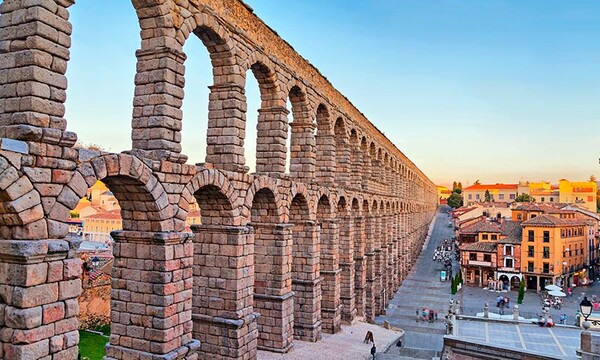
Another place to visit is the Alcazar, a castle where, until recently, the water from the Aqueduct used to arrive. Its origins also date back to Roman times and you can visit twelve of its palatial rooms decorated with period furniture. Also, do not miss going up to the Tower of Juan II, where you can see the city in its entiredy. It costs 11.50 euros to visit the ground floor and gardens, but as a student you only play 4.50. If you want to access the Cuarto Real Alto you will pay an extra 4.50 euros.
The third place to visit is the Holy Cathedral of Our Lady of the Assumption and of San Frutos, built between the 16th and 18th centuries. Famous for its late Gothic style, it got its name because at the time of its creation, the Renaissance style was already predominant. The general visit costs 3 euros, the price for the guided tour is 6 euros, and going up the tower will cost you 7 euros.
Although there are other places to visit in and around the city, you cannot miss the home of writer Antonio Machado or the Royal Mint, the home of the first mechanized mint in Spain, now a converted museum.
How long does it take to get to Segovia from Madrid? Approximately one hour by public transport and the price of the bus varies between 5 euros per ticket, though the cost depends on the time of day.
Avila
They say that Avila is the best-walled city in the world, and exactly that will be the first thing you see at your arrival, a wall of more than 2.5 kilometers with 87 towers and 9 gates that assisted in defending attacks. It was built in the 3rd century by the Romans and you can partially tour it between 10am and 8pm, although there is an entrance fee of 5 euros. On Tuesdays, from 2pm-4pm, the tour is free.
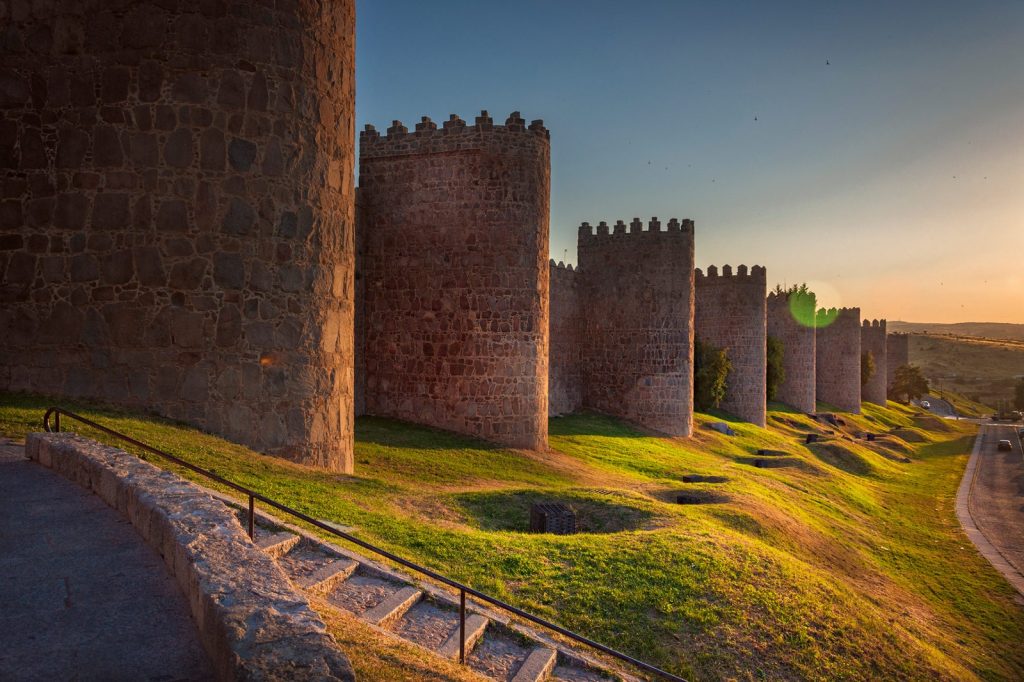 In this medieval city, the Cristo Salvador Cathedral, built in the 12th century and one of the first with a Gothic style in Spain, also stands out. Some of its parts make the cathedral look like a fortess and the cost of admission for students is 4.50 euros and is free on Tuesdays and Wednesdays from 8:30pm-9:30pm.
In this medieval city, the Cristo Salvador Cathedral, built in the 12th century and one of the first with a Gothic style in Spain, also stands out. Some of its parts make the cathedral look like a fortess and the cost of admission for students is 4.50 euros and is free on Tuesdays and Wednesdays from 8:30pm-9:30pm.
In Avila you can also visit the Basilica of San Vicente, also built in the 12th century where the Cenotaph of the Holy Brothers Martys is located, in honot of three brothers martyred in the 4th century. You will also want to visit the Plaza del Mercado Chico, wihich functioned as a Roman forum made to relax.
El Escorial
El Escoriall is only 53 kilometers from Madrid and is another place that is worth visiting. The main attraction there is the monastery, as well as the town of San Lorenzo de el Escorial, both at the foot of the Sierra de Guadarrama.
 The monastery, built between 1563 and 1584, has been declared a World Heritage Sity by UNESCO and is considered the Eighth Wonder of the World. At the time, it was intended to be the largest monument ever built by humanity, used to house the monastery of the Augustinians, the Palace of the Bourbons, the Palace of the Habsburgs, the Pantheon of the Kings, and other rooms of great historical and artistic value. Although the entrance to El Escorial costs 12 euros, you pay just half by showing your international student IF (up to 25 years of age).
The monastery, built between 1563 and 1584, has been declared a World Heritage Sity by UNESCO and is considered the Eighth Wonder of the World. At the time, it was intended to be the largest monument ever built by humanity, used to house the monastery of the Augustinians, the Palace of the Bourbons, the Palace of the Habsburgs, the Pantheon of the Kings, and other rooms of great historical and artistic value. Although the entrance to El Escorial costs 12 euros, you pay just half by showing your international student IF (up to 25 years of age).
Aranjuez
Aranjuez is a quiet city south of Madrid that you can reach in about 30 minutes by train or bus. Its main attraction is the Royal Palace, and in Resaissance style, holds gardens that you can visit in an afternoon. The fee upon entry is 9 euros, although with a student ID the cost is only 4 euros.
Alcala de Henares
Perhaps you want to know more about the most famous character from Spain, Don Quixote de La Mancha. There is no place better than visiting Alcala de Henares, the place where Miguel de Cervantes Saavedra lived.
In this city lies the writer’s house, restored to what is believe to be it’s original state wher Cervantes Saavedra lived. But, you should also know that Alcala was also the residence of others such as Lope de Vega, Quevedo and Calderon de la Barca. That is why this journey is full of art and history.
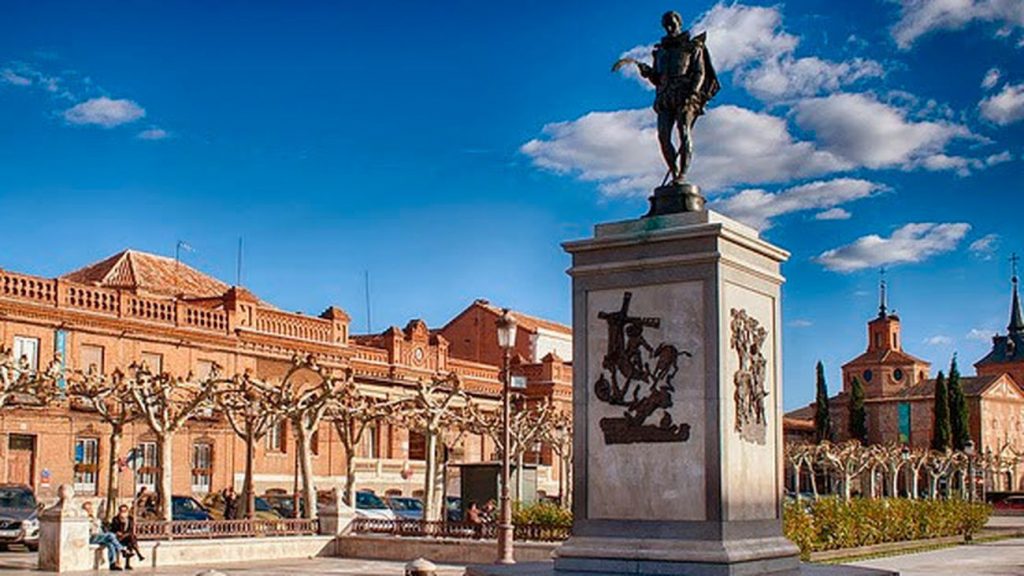
You can also visit the Magisterial Cethedral fo Alcala de Henares, one of the two churches in theworld that holds that title, since all its canons are doctors of theology. The building is famous for its relics, including a crypt where the remains of the child martyrs rest.
You can also visit the historic center of the city, go through the archaeological museum to learn about the Roman peiod of Alcala, or visit the building of the University of Alcala, where every 23rd of April the famous Cervantes Prize for Literature is awared by the hands of the King of Spain. As you walk through the Alcala, you will also be able to see the old walls, since it was once a fortified city.
Chinchon
Chinchon is on the list of the most beautiful towns in Madrid, has about 5,000 inhabitants, and is located 45 kilometers from Madrid. Its main attraction is the Plaza Major, which of medieval origin, has numerous terraces to see and visit.
There is also a castle in Chinchon which can only be seen from the outside, as it is private property. In addition, you will not want to miss the Hermitages of San Anton and San Roque, the Lope de Vega Theater, the Convent of the Clarisas, the Casa de la Cadena or the Convent of San Agustin.
Buitrago de Lozoya
One of the getaways that you cannot miss is the Buitrago de Lozoya, a town north of the Community of Madrid on the slopes of the Sierra de Guadarrama.
 There, in addition to touring its streets and surroundings, you can visit nothing less than a collection of works by Pablo Picasso, thanks to the donation of one of the artist’s friends. In Buitrago de Lozoya you can also visit the Clock Tower, the main access to the town wall, built in the 14th century. The clock upon the tower is from the 20th century, with the origianl machinery being from the 19th century.
There, in addition to touring its streets and surroundings, you can visit nothing less than a collection of works by Pablo Picasso, thanks to the donation of one of the artist’s friends. In Buitrago de Lozoya you can also visit the Clock Tower, the main access to the town wall, built in the 14th century. The clock upon the tower is from the 20th century, with the origianl machinery being from the 19th century.
The wall itself, which you can walk and see beautiful views, hides many spaces that you will want to know about, such as the artillery exhibition in one of its highest parts, or the Church of Santa Maria del Castillo, located within the defense itself.
Another site to see is the Castillo de los Mendoza, built between the 14th and 15th centuries. Finally, you can visit the viewpoint of the Lozoya river, where there are beautiful views of the town. Only wear comfortable shoes, as you will have to go on a hiking route. If you dare to go further, you can canoe in one of the companies that operates in the place.
Manzanares El Real
If you like climbing and hiking, perhaps you should visit Manzanares El Real, a small town in the Community of Madrid that you can reach by bus and with great ecological interest.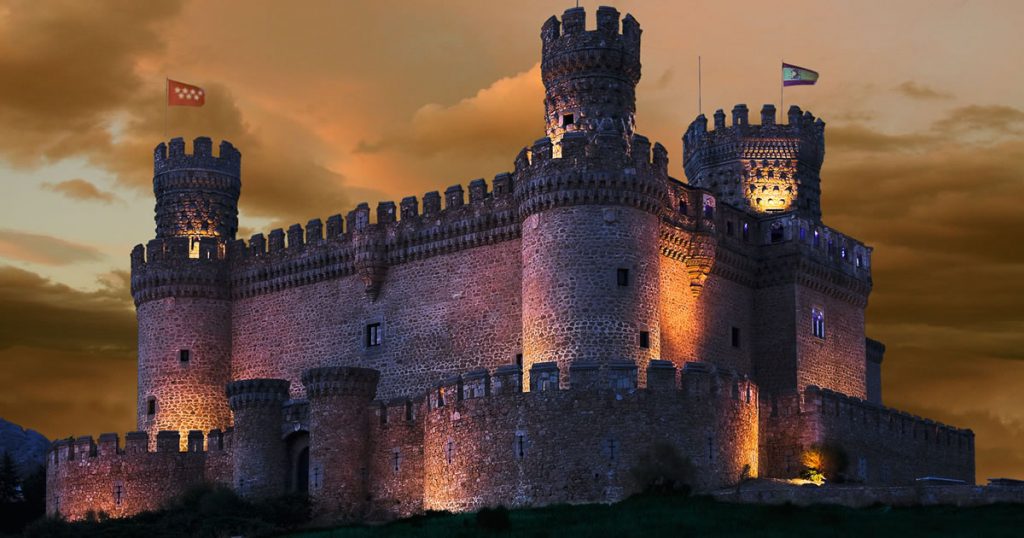
On the outskirts of the city are the Santillana reservoir, at the foor of the Sierra de Guadarrama, and La Pedriza, an area composed of cliffs, steams, meadows and rocky walls, where you can practice climbing with different levels of difficulty. If you only want to hike, there are numerous paths that you can take, very well signposted.
In Manzanares El Real you should be sure to visit its castle, which dates back to the 15th century, visible upon arrival in the city and which can be accessed for free. If you are interested in a guided visit to the most important rooms of the fortess, you can access it by paying 5 euros.
Other Towns to Know
We have already told you some of the best places you can visit in just one day during your study-free weekends. However, there are many more places but the list would be endless.
To end this tour, from Marli House we suggest some other beautiful towns that you cannot miss. One of them is Brihuega, a little further from the aforementioned places, but well worth visiting.
The town in the province of Guadalajara, in the autonomous community of Castilla-La Mancha, is known for its lavender fields that turn purple every summer and where thousands of visitors come to take the perfect photo.
But going there is also a good opportunity to visit its old town, castles and experience the Lavender Festival in July, famous for its concerts at sunset. You can also enjoy the local gastronomy.
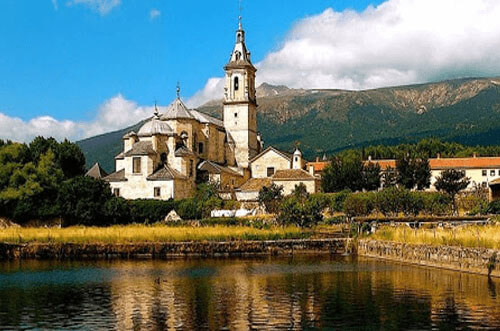 Another town to see is La Hiruela, which they say is one of the most beautiful in Sierra Norte de Madrid and it is one hour from the capital of Spain. It has been a UNESCO Biosphere Reserve since 2005 and stands out for its stone houses and the hiking and biking trails around it.
Another town to see is La Hiruela, which they say is one of the most beautiful in Sierra Norte de Madrid and it is one hour from the capital of Spain. It has been a UNESCO Biosphere Reserve since 2005 and stands out for its stone houses and the hiking and biking trails around it.
Nor can you miss Rascafría, 84 kilometers from Madrid in the Sierra de Guadarrama, a town that dates back to the Middle Ages and will surprise you by the splendor of the surrounding nature. In this town you can visit the Monastery of El Paular that was built in 1930 and has an entrance cost of 5 euros. It is known for its most important cultural heritages. In front of it is the Puente del Perdón, created in the mid-18th century.
But perhaps the most famous site in the area is the Finnish forest, reminiscent of the Nordic forests, which holds poplars, birches and firs. You can also go to the natural pools of La Presilla, if you go in summer. If you like to walk, you can go to the Cascadas del Purgatorio, its splendor can be enjoyed during the thaw in the spring.
Finally, another town, Patones de Arriba, will dazzle you with its black slate stone houses, whose history dates back to the 16th century and is one of the most important rural tourism centers in the Community of Madrid.
Up to here the list could go on, since there are places, such as Garganta de los Montes, Torrelaguna, Horcajuelo de la Sierra, El Berrueco or Puebla de la Sierra, that are well worth visiting. You already have all the information to go to these interesting places, just pack your backpack and go out and enjoy them!

 To choose the rental option without annual subscription, you must download the BiciMAD app. Then you are able to fill in the form on your phone or the kiosk with your data. Just pay for the time used with your credit card, go to one of the bike stations throughout the city and scan the QR code on the bike you want to unlock it!
To choose the rental option without annual subscription, you must download the BiciMAD app. Then you are able to fill in the form on your phone or the kiosk with your data. Just pay for the time used with your credit card, go to one of the bike stations throughout the city and scan the QR code on the bike you want to unlock it!